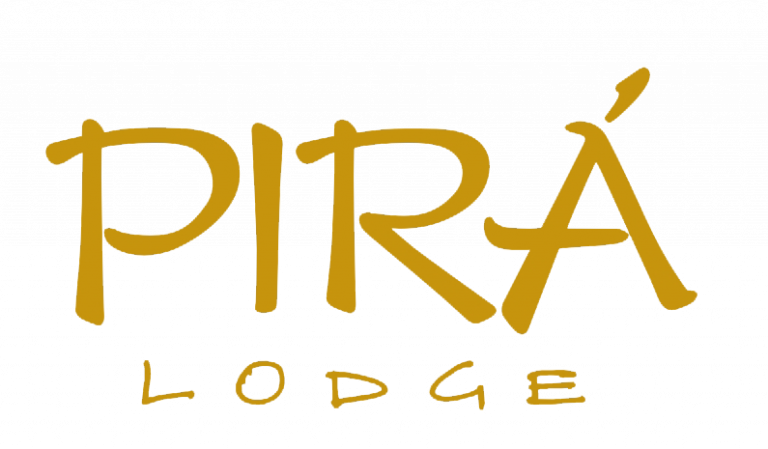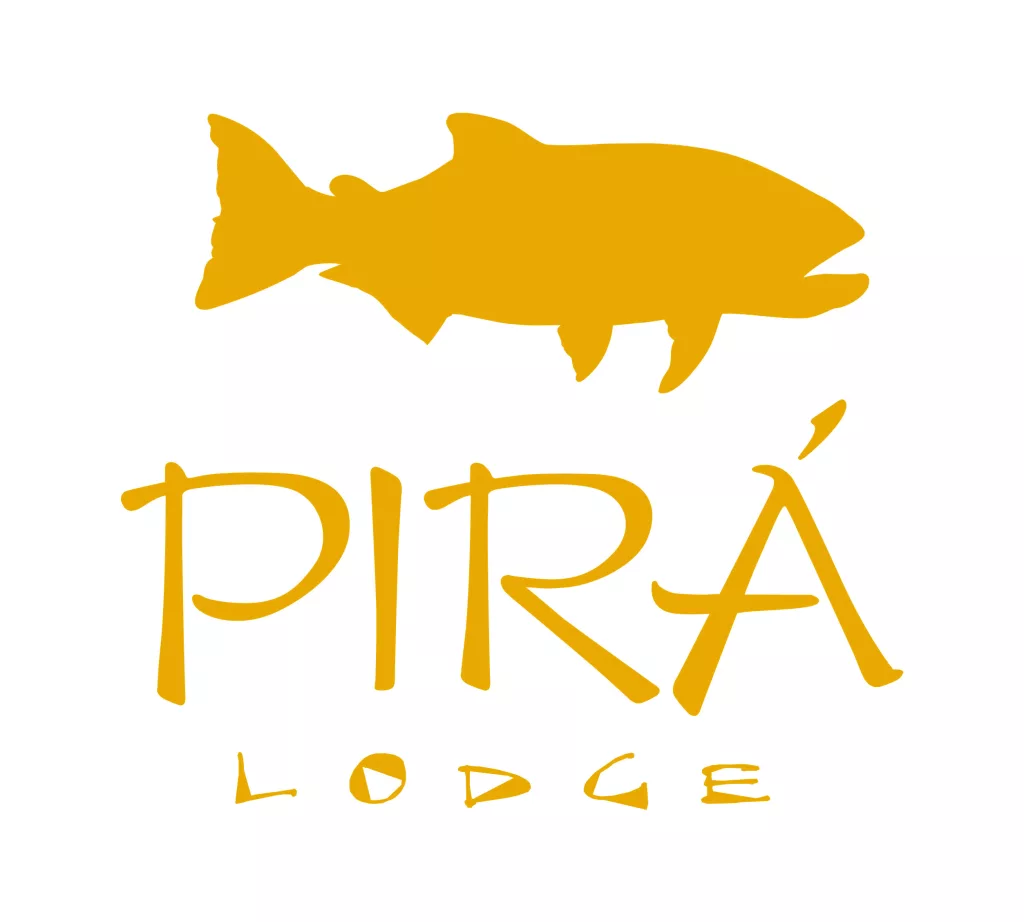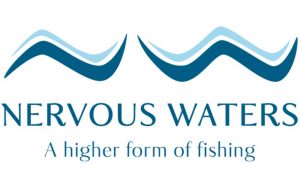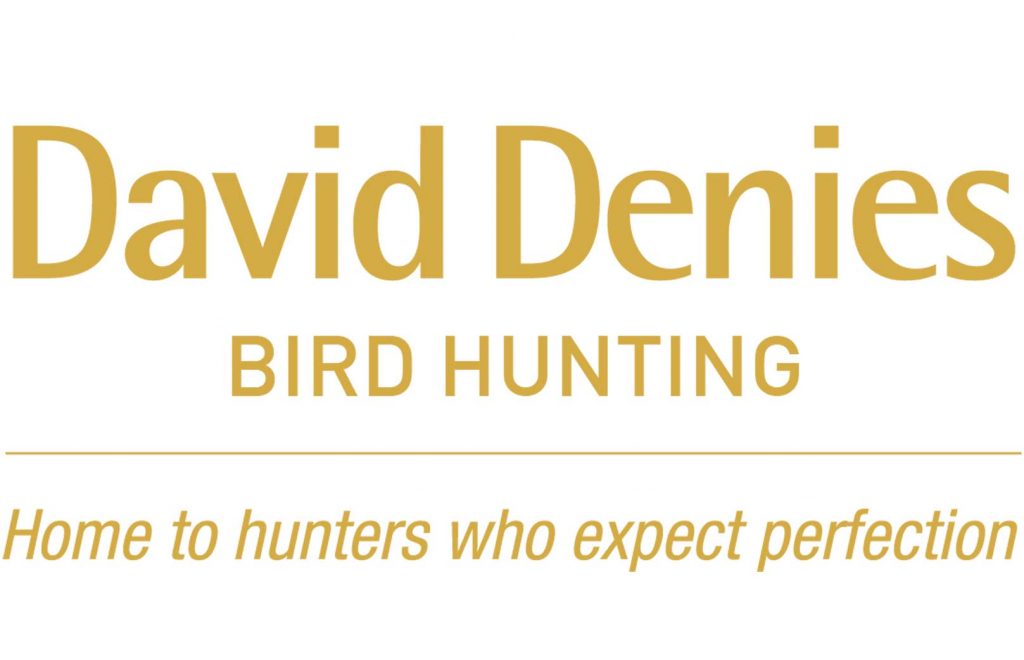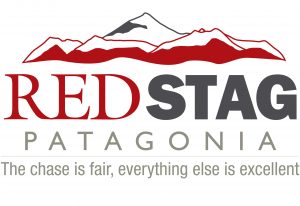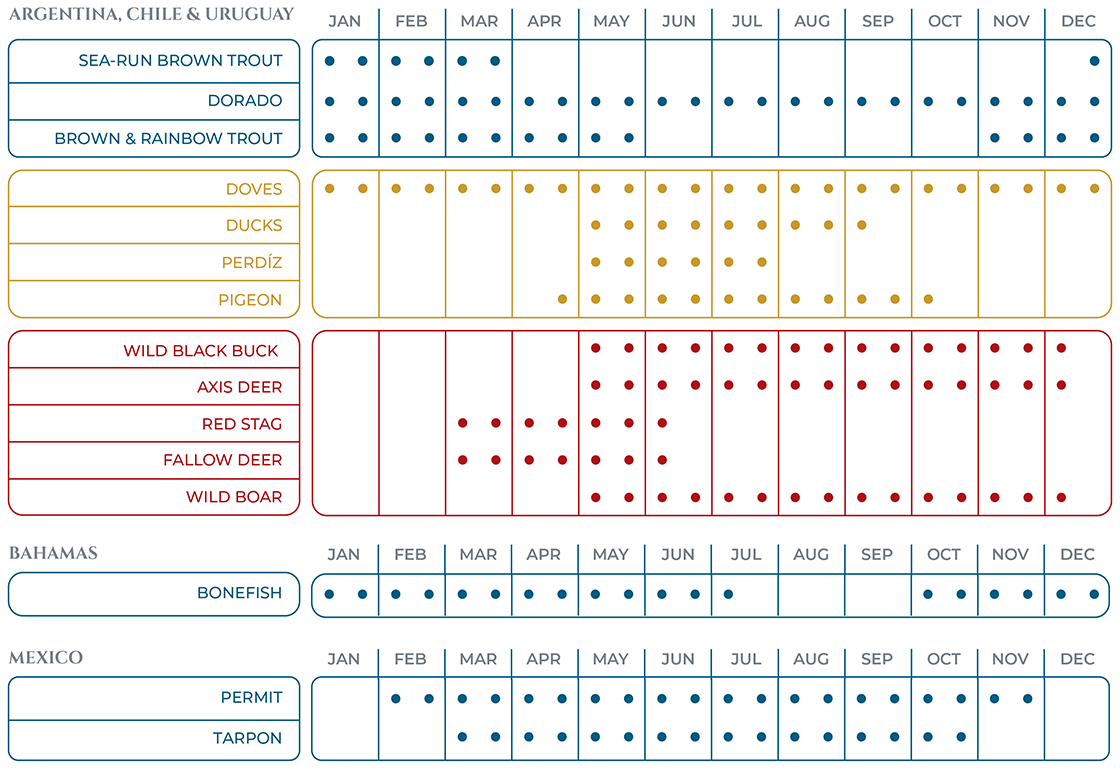What time of the year should I come?
Pirá Lodge is located on the shores of the Iberá Marshland Nature Reserve, the second-largest wetland on Earth, with more than 3.2 million acres of aquatic wilderness. Here clear waters filter and meander through ever-changing channels, islands, lagoons, and streams. The Marshland has a unique climate during our season as the waters rise and fall, but what is perhaps the most astonishing is how clear the waters remain throughout high and low water events. Our fishing season runs from late spring until the fall, and our fishing tactics change to match the conditions and large fish behavior found during each season, ensuring our guests have the best opportunities to land the Dorado of their dreams.
Spring Season (September into late December)
Our season begins as the first warm fronts of spring begin to heat the waters of the Iberá Marshland. As the conditions improve, the Dorado wakes up and the action starts. Under the warm spring sun, the marsh and its vegetation come to life, as well as the predators lurking below the surface. This time of the year, everything flourishes; from Capybaras keeping watch over their new young and hundreds of migratory birds hatching.
This time of year also corresponds with the beginning of our rainy season. It’s an excellent time of the year to focus on the larger female Dorado who are feeding actively, packing on weight prior to spawning. This normally happens between November and early January depending on our weather patterns and water levels.
During spring, our large, overwintering Dorado are in phenomenal shape and eager to eat as well as their migratory counterparts who are beginning to arrive in the system. As the rains start, the main artery of the Marshland, the Corriente River, starts to rise and the higher flows are the first sign of the annual Dorado migration. Schools of Sábalo swim upstream from the Río Paraná, into the Corriente River, and into the marsh. Hot on their tails are aggressive Dorado, eager to feed on their favorite baitfish. Spring is the best time to target our large pre-spawn females and our migratory fish as they flow into the marsh.
Summer Season (Late December – Late March)
Summer arrives in late December, and temperatures already are high by mid to late November. December and January are normally the two warmest months of the season. Occasional rains occur until January, but normally rains are very welcomed as it oxygenates the water and drops the temperature of the water. By the end of December, the spawn is over and Dorado start to actively feed, getting back into shape after spending the bulk of their energy on spawning.
As the summer progresses, our water remains clear as more fish arrive in numbers. By January the run reaches its crescendo. Schools of sábalos push into the system and behind them, schools of hungry Dorado. This is the time of the year to try all kinds of top-water techniques; from mouse patterns to dry flies of all kinds. When presented correctly, Dorado will explode on dries from below for an easy snack.During the summer, we fish both the river and the marsh. When flows allow for it, we fish the upper braided channels of the marsh and if water levels are lower, we’ll focus on the Corriente River where monsters lurk. This time of the year is great for numbers and also sizes.
Late Summer and Early Fall (Late March – Early June)
As the summer wanes, water levels start to drop, and by the end of the season, in March and April, water levels are at or near their lowest. By this time, the Dorado migration is usually over, but depending on how our summer went, it can be delayed into late March or early April. This is a great time of the year to fish weather-wise. Days are not as warm and start to shorten, cooling the waters. Usually, we tend to find more fish in the upper waters of the Marsh and the headwaters of the river as the fish start to migrate out of the marsh and return back to the river. Fishing is still very good and we find Dorado feeding happily in all parts of the water column.
